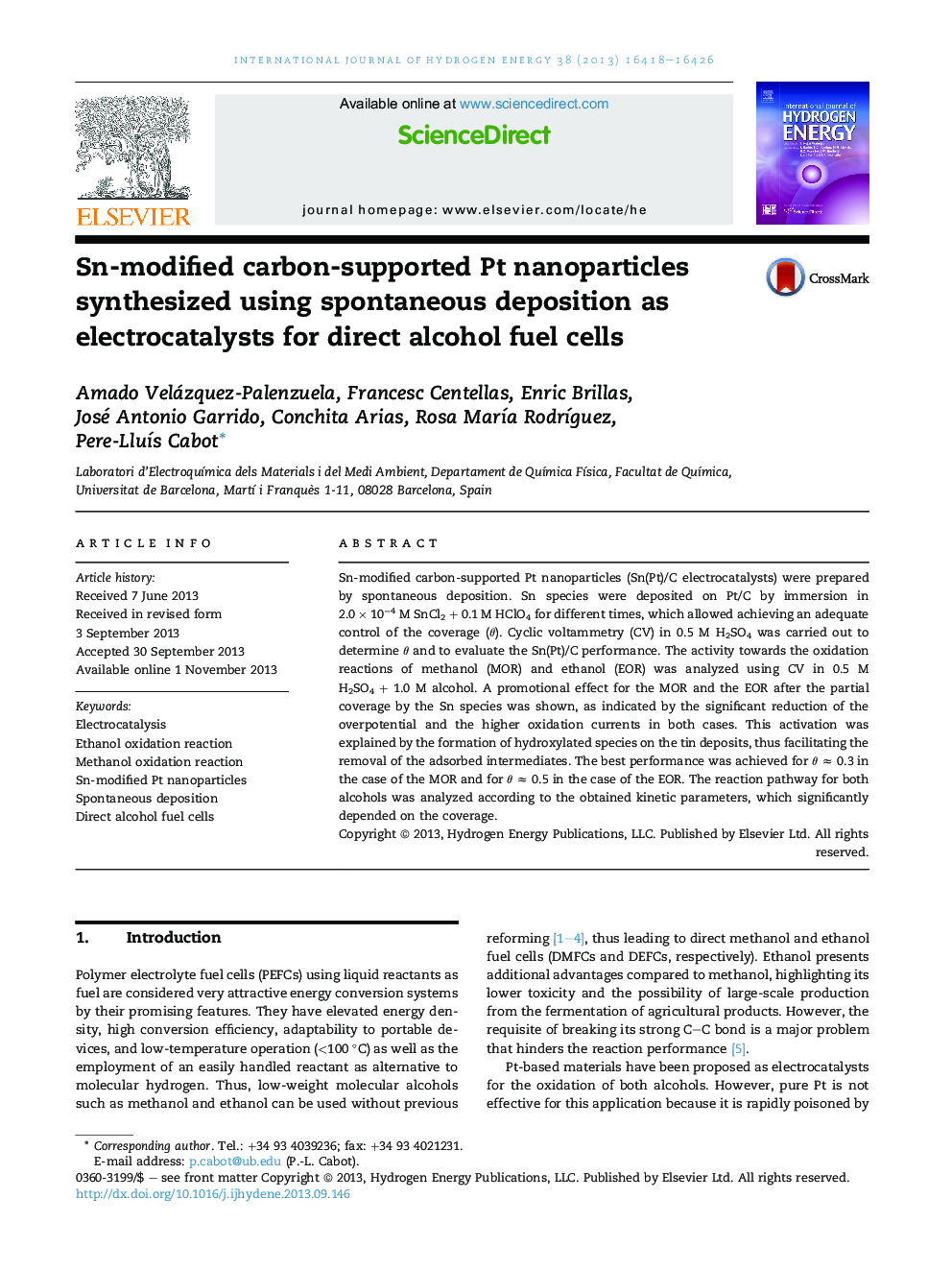| Article ID | Journal | Published Year | Pages | File Type |
|---|---|---|---|---|
| 1274205 | International Journal of Hydrogen Energy | 2013 | 9 Pages |
•Sn-modified Pt/C electrocatalysts were prepared using spontaneous deposition.•The deposition rate of Sn species followed the intraparticle diffusion model.•The optimum coverage for the methanol oxidation reaction was θ ≈ 0.3.•The optimum coverage for the ethanol oxidation reaction was θ ≈ 0.5.•The reaction pathway was examined on the light of the kinetic parameters.
Sn-modified carbon-supported Pt nanoparticles (Sn(Pt)/C electrocatalysts) were prepared by spontaneous deposition. Sn species were deposited on Pt/C by immersion in 2.0 × 10−4 M SnCl2 + 0.1 M HClO4 for different times, which allowed achieving an adequate control of the coverage (θ). Cyclic voltammetry (CV) in 0.5 M H2SO4 was carried out to determine θ and to evaluate the Sn(Pt)/C performance. The activity towards the oxidation reactions of methanol (MOR) and ethanol (EOR) was analyzed using CV in 0.5 M H2SO4 + 1.0 M alcohol. A promotional effect for the MOR and the EOR after the partial coverage by the Sn species was shown, as indicated by the significant reduction of the overpotential and the higher oxidation currents in both cases. This activation was explained by the formation of hydroxylated species on the tin deposits, thus facilitating the removal of the adsorbed intermediates. The best performance was achieved for θ ≈ 0.3 in the case of the MOR and for θ ≈ 0.5 in the case of the EOR. The reaction pathway for both alcohols was analyzed according to the obtained kinetic parameters, which significantly depended on the coverage.
